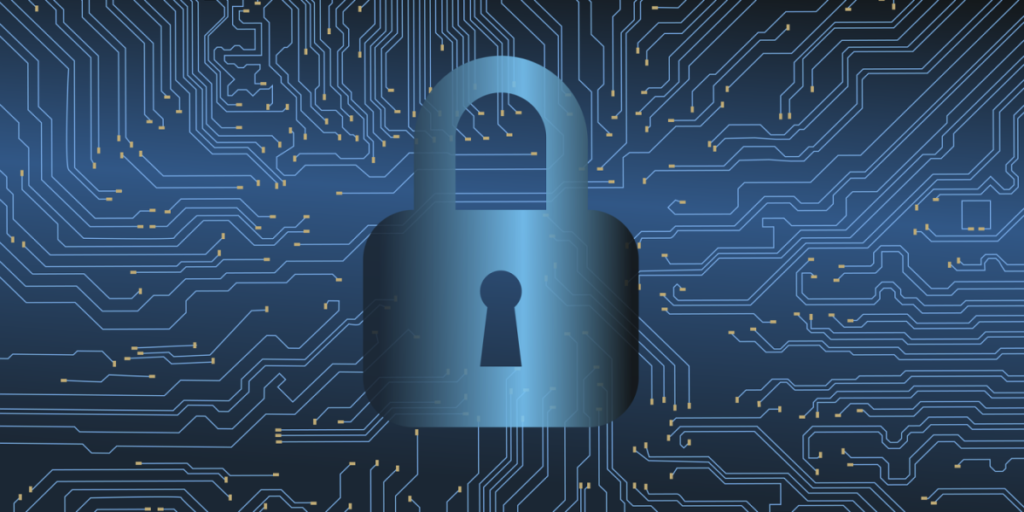Be a part of high executives in San Francisco on July 11-12, to listen to how leaders are integrating and optimizing AI investments for fulfillment. Learn More
As soon as an enterprise decides to go all-in on zero belief, it normally begins robust, solely to hit limitations nobody noticed coming. This makes a roadmap important.
Seeing its shoppers who're pursuing zero belief dealing with challenges in reaching the following stage of maturity, Forrester invested a 12 months of its zero belief group’s time in creating the roadmap they want.
Forrester’s latest report, Chart Your Course to Zero Trust Intermediate, gives shoppers route for attaining an intermediate stage of zero-trust maturity. It options almost 40 duties and applied sciences throughout the seven zero-trust domains — information, individuals, units, workloads, visibility and analytics, automation and orchestration, and networks — that each group pursuing a zero-trust technique can use.
Notice: The Cybersecurity and Infrastructure Security Agency (CISA) additionally has a zero trust maturity model. It parallels Forrester’s in that it contains three ranges — conventional, superior and optimum — akin to Forrester’s newbie, intermediate and superior ranges.
Occasion
Rework 2023
Be a part of us in San Francisco on July 11-12, the place high executives will share how they've built-in and optimized AI investments for fulfillment and averted frequent pitfalls.
Why an in depth zero-trust roadmap now?
Senior analysis analyst David Holmes, one of many report’s authors, writes within the weblog submit All Aboard: Chart Your Course to Zero Trust Intermediate that “we selected an intermediate quite than the superior goal of maturity for this report as a result of nearly all of Forrester shoppers and different organizations that we discuss to are at the start stage of zero belief.”
>>Don’t miss our particular situation: The search for Nirvana: Making use of AI at scale.<<
The report, Holmes writes, “is a foundational piece of analysis from the zero belief analyst group at Forrester, representing a 12 months of collation, collaboration, creation, and evaluation. It builds on certainly one of our most generally learn studies, A Practical Guide to a Zero Trust Implementation [client access required] however goes a lot deeper into what must be achieved. The ‘Chart Your Course’ report facilities round 37 duties, grouped into 5 phases.”
Forrester organized the roadmap by assigning 4 parameters to every process: issue, affect, precedence, and dependency decision.
Main zero-trust consultants and threat professionals peer-reviewed the report.
Key insights CISOs must know
Forrester divides its roadmap into domains that present context for particular zero-trust initiatives. The domains begin with Discovery, and progress by means of Customers, Gadgets, Workloads, Visibility, Automation and Networks.
Getting information categorized and categorized units a stable basis for future phases and for taking over the problem of figuring out essential functions. Additionally core to the Discovery section is initiating service discovery by way of microsegmentation.
The next two pictures lay out Forrester’s Zero Belief Intermediate Roadmap.

CISOs inform VentureBeat that 2023 is popping right into a tougher 12 months than anticipated due to elevated stress to consolidate tech stacks to cut back prices and enhance visibility. The roadmap’s Visibility area is seeing vital vendor consolidation available in the market as extra cybersecurity platform suppliers increase the breadth and depth of community site visitors analytics.
Organizations near attaining an intermediate stage of zero-trust maturity must maintain the next six insights in thoughts as they proceed pursuing their initiatives:
1) Concentrate on getting information discovery proper
“Knowledge discovery and classification is difficult, however your group can’t afford to attend till this mission is accomplished to start out making progress within the phases,” writes Forrester’s zero-trust group. Knowledge discovery and classification will rapidly establish essentially the most essential functions that want multifactor authentication (MFA) and single sign-on (SSO).
Specializing in this section first will make simplifying the information classification program simpler. It can additionally create extra assist for locating and inventorying units.
Apply the identical depth to automating discovery in order to seek out information repeatedly. Based on the report: “You could have Varonis deployed for managing entitlements, or instruments like Broadcom, Forcepoint or Proofpoint deployed for DLP, and these might know the placement and classification of your information. Chances are you'll elect to deploy ZTNA and microsegmentation options early on this section to benefit from their in depth software discovery know-how.”
2) Concentrate on identities, as a result of SSO and MFA are fast wins
Forrester has usually suggested its enterprise shoppers to pursue single SSO and MFA as they're fast, simply quantified wins. “Each capabilities have a excessive likelihood of success and are extremely seen. They may increase confidence in your ZT program early and unlock additional finances,” says the report.
3) Go all-in on endpoint safety sensible and resilient sufficient to assist zero belief
CISOs inform VentureBeat that endpoint safety platforms (EPP) and identification and entry administration (IAM) platforms are converging, with cloud-based integrations turning into extra commonplace thanks partially to a higher number of APIs and integration factors.
Endpoints and identities converge sooner than many CISOs notice as a result of each endpoint takes on an more and more numerous variety of identities assigned by apps, platforms and inside techniques. There’s additionally the exponential rise in machine identities, making identification and entry administration converge with endpoint safety sooner than many enterprises anticipate.
“The entry options can pull alerts like machine well being and patch standing from Microsoft and SentinelOne, however it's essential to make sure that your endpoint safety software program will combine along with your zero belief entry answer. Superior integrations like Appgate and CrowdStrike assist each pushing and pulling alerts and configurations (e.g., quarantining the endpoint remotely),” advises the report.
Self-healing endpoints are, by definition, resilient. ITSM leaders inform VentureBeat that self-healing endpoints are price it as a result of they now not should waste beneficial IT specialists’ time rebuilding endpoints remotely.
Absolute Software, Akamai, Cisco, CrowdStrike, ESET, Cybereason Defense Platform, Ivanti, Malwarebytes, Microsoft, SentinelOne, Tanium, Trend Micro and lots of different distributors have autonomously self-healing endpoints.
Absolute’s strategy — being embedded within the firmware of each PC endpoint — permits the Absolute Resilience platform to mechanically restore or reinstall mission-critical functions, distant question, and remediate units at scale. The platform can even uncover delicate information on endpoints and examine and recuperate stolen units.
Absolute additionally turned its self-healing endpoint experience into the business’s first self-healing zero-trust platform. The platform supplies real-time asset administration, machine and software management, endpoint intelligence, incident reporting, resilience and compliance.
4) Automate vulnerability and patch administration throughout your endpoints
“Many organizations have already got a vulnerability administration and patch administration program however want to enhance the automation,” advises the Forrester report. “Failing to automate will lead to extra denied entry, poor person expertise, and, most vexing of all, service tickets.”
“Automation and self-healing enhance worker productiveness, simplify machine administration and enhance safety posture by offering full visibility into a company’s total asset property and delivering automation throughout a broad vary of units,” Srinivas Mukkamala, chief product officer at Ivanti, advised VentureBeat in a latest interview.
Main distributors in automated patch administration which can be planning to ship or are presently delivering options utilizing AI and machine studying (ML) embrace Broadcom, CrowdStrike, Cybereason, SentinelOne, McAfee, Sophos, Development Micro, VMWare Carbon Black and ZENworks Patch Management.
Ivanti has a constantly robust monitor report at integrating acquired applied sciences into its platforms and fast-tracking new AI- and ML-based patch administration options. Ivanti’s Neurons platform depends on AI-based bots to hunt out, establish and replace all patches throughout endpoints that have to be up to date.
Ivanti’s Risk-Based Cloud Path Management integrates the corporate’s vulnerability threat score (VRR) to assist safety operations middle (SOC) analysts take prioritized motion based mostly on threat whereas integrating service-level settlement (SLA) monitoring.
5) Analyze and report all person exercise, monitoring each endpoint’s real-time requests and transactions
Forrester urges organizations to transcend the company community, and analyze and report all person exercise throughout the web. Increasing monitoring past the endpoint gathers telemetry information to validate and monitor each endpoint’s real-time information transactions rapidly and establish threats and reply in actual time.
Distributors offering steady monitoring for integration into their clients’ zero-trust initiatives embrace Cisco, with SecureX, Duo and its Identification Providers Engine (ISE); Microsoft, with Azure Energetic Listing and Microsoft Defender; CrowdStrike, with its Falcon platform; Okta’s Identification Cloud; Palo Alto Networks’ Prisma Entry; BitSight; and Totem, which focuses on monitoring to make sure NIST 800-171 and CMMC compliance.
6) Deploy microsegmentation within the information middle
“Don’t DIY microsegmentation, and don’t search for infrastructure options out of your community or virtualization distributors — these initiatives simply flounder as a consequence of evaluation paralysis, improper scoping, and enforcement nervousness, leaving you holding the bag,” advises Forrester’s zero-trust group within the report.
Microsegmentation is an important element of zero trust, as outlined in NIST’s zero-trust framework.
Search for microsegmentation distributors with a stable monitor report of delivering outcomes at scale. These embrace AirGap Networks, Akamai Guardicore, ColorTokens, Illumio, Onclave Networks, Palo Alto Networks, Zero Networks and Zscaler.
Guardrails for getting began
Forrester’s zero-trust group “encourages adopters of zero belief to be practical of their expectations and set their sights on attaining an intermediate stage of zero-trust maturity.” The report supplies guardrails to assist CISOs and their groups handle expectations whereas overcoming limitations to progress. The three guardrails Forrester prefaces its roadmap with are:
1) One measurement doesn’t match all
Forrester’s evaluation displays what CISOs usually inform VentureBeat: that getting zero belief proper is a enterprise resolution first. Defending identities and automating core safety processes, as Pella Company does as a part of its zero-trust roadmap, is desk stakes.
Forrester urges organizations to remain cognizant of the necessity to course-correct their zero-trust methods over time. CISOs, too, inform VentureBeat concerning the worth of an adaptive implementation that flexes as their enterprise fashions shift.
Forrester recommends a time horizon of two years to succeed in intermediate zero-trust maturity, although CISOs and CVIOs inform VentureBeat the velocity of progress relies upon partially on board-level monetary assist and enthusiasm.
2) Reaching intermediate maturity will not be simple, however you’re already a part of the best way there
The report notes “that many organizations have beforehand accomplished a number of the first required phases with initiatives round identification and machine safety.”
On the similar time, it cautions organizations that the issue of reaching intermediate maturity will depend upon an enterprise’s surroundings.
3) This isn’t DIY
Lastly, Forrester advises getting assist from educated professionals in IAM, MFA, SSO, ZTNA, conditional entry, microsegmentation and NAV applied sciences early. Applied sciences like SOAR, EDR, behavioral analytics, RBI, course of ringfencing, machine identities and machine studying are thought of a part of superior maturity.
“Hyperscalers can afford to construct every thing from the bottom up; you'll be able to’t,” cautions the report.

